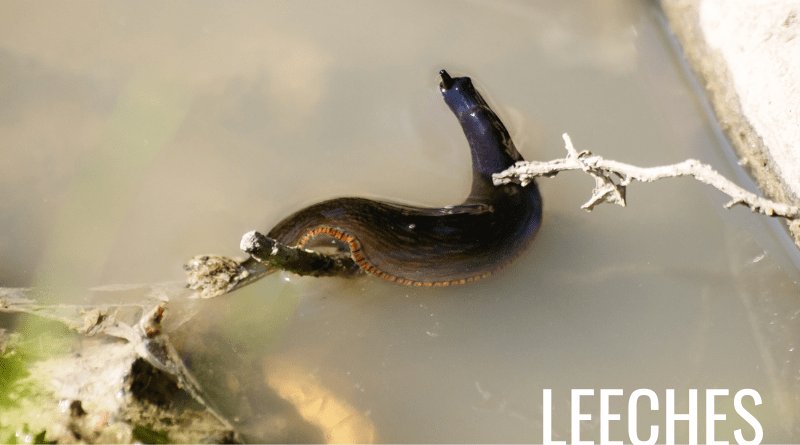How to Get Rid of Leeches in a Pond (Safely & Quickly)
Pond Academy is reader-supported. Buying through links on our site may earn us an affiliate commission. As an Amazon Associate I earn from qualifying purchases.
Leeches: they're typically one of the last things people want to find in their pond.
But, surprisingly, they aren’t that uncommon.
Especially if you've recently added new fish or plants to your pond.
So, let’s learn how to get rid of leeches in a pond and the steps you need to take to make sure they never come back!
Are Leeches Good For A Pond?

Before we explain how to get rid of leeches in a pond, I'm going to clear up some things about leeches.
The fact of the matter is that most leeches are perfectly innocuous. Of all the species of leeches, the ones you're most likely to find in your pond are bottom feeders. Those leeches won't pose any risk to your fish or your pond.
There are also carnivorous leeches. These are less likely to get into your pond, but they can get in all the same. Don't worry, though: most of these won't suck anyone's blood. These leeches eat other worms and similar insects.
Of course, some leeches do feed on blood.
The good news is that these types are very unlikely to get in your pond and that most won't feed on fish, either. The bad news is that there is a variety of leech that does feed on pond fish. These leeches are aptly known as fish leeches, aka piscicola geometra.
Because it can be hard to tell which type of leech you have in your pond (or if you have more than one kind), you'll want to take action quickly. Fortunately, the process for getting rid of leeches is about the same, regardless of what type you have.
Get Our Best Pond Tips Sent to Your Inbox for Free!
Join thousands of others and learn from our decades of pond building and maintenance experience! Your pond will thank you!
By subscribing you agree to receive emails from PondAcademy.com. We will always respect your privacy and you can unsubscribe at any time.
How To Get Rid Of Leeches In A Pond
Here are the steps you can take to eliminate leeches from your pond:
Get Rid Of Sludge & Muck At The Bottom
Not only do some leeches feed off of bottom decay, but they lay their eggs and raise their children there, too. Even carnivorous leech eggs are known to fall to the bottom of ponds before hatching.
What you'll want to do, then, is take away the breeding grounds. To do that, use whichever tool you use for regular pond maintenance. These implements can range from nets to pond rakes to pond vacuums (which I recommend).
Bacterial treatments are also useful in reducing the amount of gunk at the bottom of your pond. The bacteria feed on it, leaving your pond nice and clean. For best results, use pond bacteria treatments alongside manual cleaning.
Lay A Trap
That first step is great for getting rid of herbivorous leeches and some carnivorous leeches' eggs. If you've still got meat-eating, blood-drinking leeches in your pond, though, you'll want to trap them.
There are two types of traps you can use: store-bought or handmade. You can get the former wherever you get aquarium accessories or check out this pest trap which can be used for leeches:
Or you can make one out of tins you have lying around the house.
DIY Leech Trap
If you're making a trap yourself, what you need to do is pierce the tin with holes big enough for the leeches to get in. Because of these piercings' structure, the leeches won't be able to escape once they've entered.
To lure the leeches over, put some kind of raw meat in your trap—any kind will do. All you need is a small amount to get the leeches coming.
Leave the trap in a shallow part of your pond for a day. If you've caught enough leeches to fill your device, remove the leeches, and put out new trappings. Keep this routine up until you stop finding leeches in your trap.
Treat Your Fish And Pond
If you find a leech on your fish you will need to remove it immediately. The process is similar to removing fish lice, a pair of tweezers will do the job. What's important is that you be gentle while you remove the leech; you don't want to hurt your fish in the process.
From there, you'll want to check all of your pond fish for leeches. Use a net of the right size for your fish (a smaller one for small fish, a bigger one for big fish) to delicately bring them to the surface for inspection.
Be sure to check around the gills, fins, and stomach, because leeches find these spots especially good for feeding.
Once a fish no longer has any pesky feeders on it, you can put it back in the pond.
You'll also want to add an antibacterial treatment to the water to help heal any injuries on your fish.
If using Melafix, add a tbsp of product for every 150 gallons of pond water. Dose daily for 7 days.
Get Your Fish To Lend A Hand
Your fish, especially larger fish like koi, pose a more significant threat to most leeches than the other way around. If you believe the leeches in your pond will not harm your fish, let the fish have at 'em. Pond fish can and will feast on the wormy intruders. And if you've already cleaned the pond, then the leeches won't have anywhere to hide.
If you think it's a good idea, you can even bring in other species of fish like bass or red ear sunfish.
How Do I Keep Leeches Out Of My Pond?
Now that you know how to get rid of leeches in a pond, you'll want to make sure they don't come back. How do you do that? Regular pond maintenance is vital. Remember: leech eggs can't survive if they don't have a fertile environment.
If you're bringing new animals or plants into your pond, keep them isolated at first. Two weeks to a month is a suitable time frame. This will give any hidden eggs a chance to hatch and be caught before introducing new critters to your pond. Plus, the lifecycle of leeches is fairly short, typically only 30 days for fish leeches.
To harbor pond fish and/or pond plants during the waiting period, get a suitably-sized stock tank.








